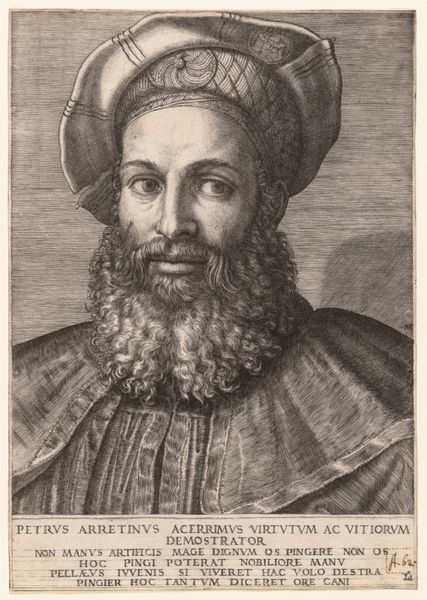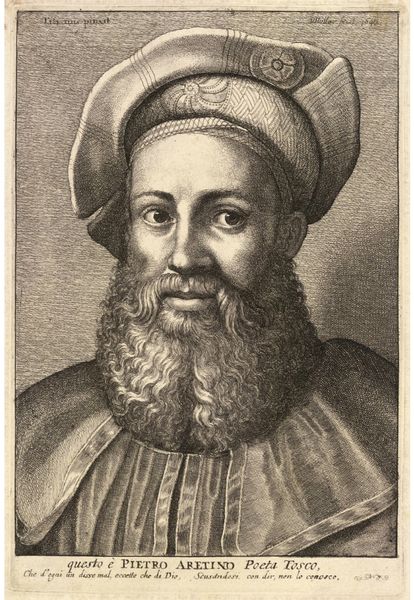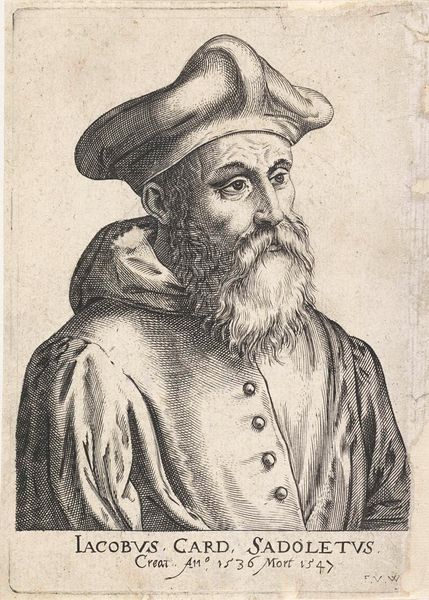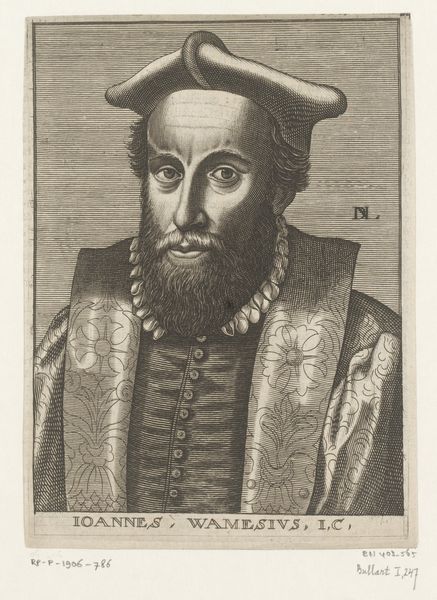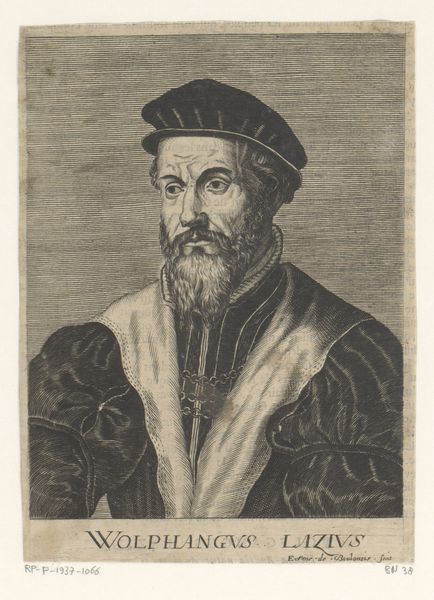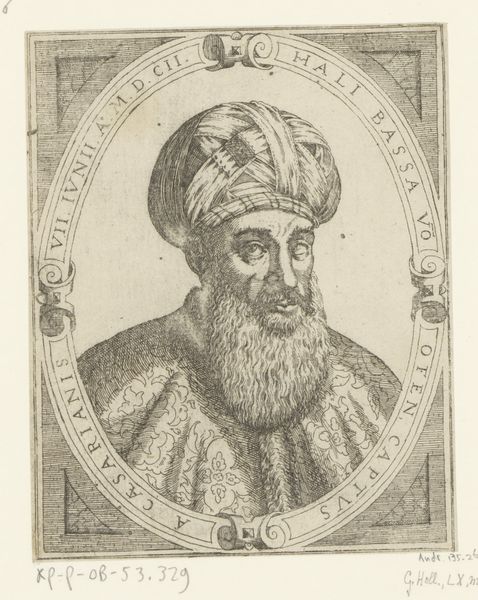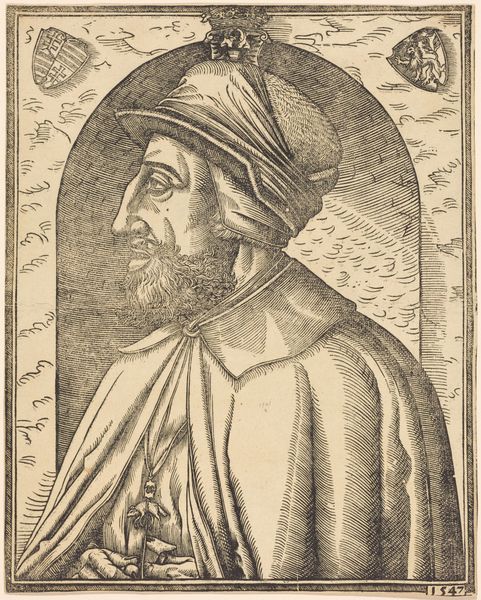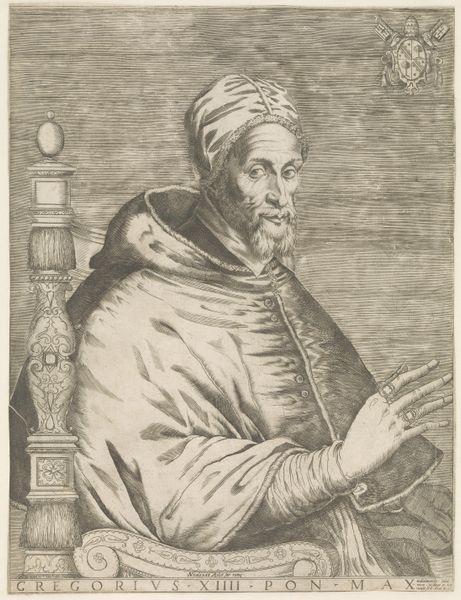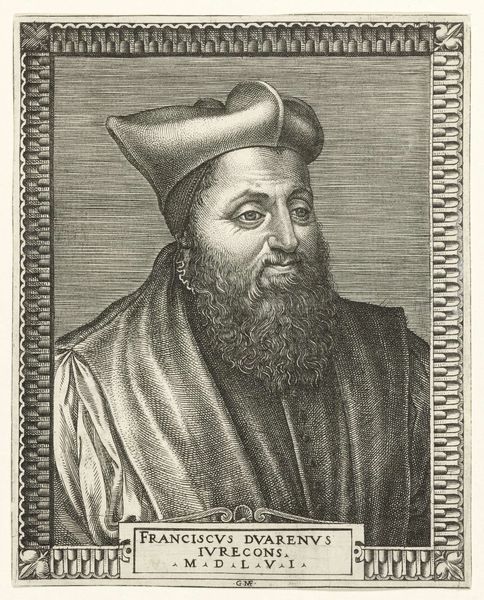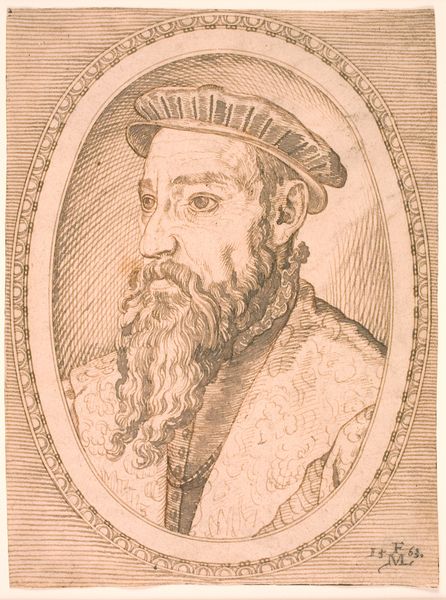
Dimensions: 215 mm (height) x 149 mm (width) (bladmaal), 213 mm (height) x 148 mm (width) (plademaal)
Curator: Before us is "Pietro Aretino," a portrait engraved by Marcantonio Raimondi sometime between 1470 and 1534. It's held here at the SMK, the Statens Museum for Kunst. Editor: The detail is extraordinary. Even in print, you can feel the weight of the paper and appreciate the pressure applied to create those lines, especially in rendering his substantial beard and patterned hat. There is clear value being added to that page through immense and obvious human labor. Curator: Absolutely. Consider Aretino himself—a writer, satirist, and incredibly influential figure known for his sharp wit and political connections. Raimondi, by immortalizing him through the meticulous process of engraving, underscores the power dynamics at play. He solidifies Aretino's cultural capital and his intellectual contributions, granting him visibility that transcends his immediate social circle. The engraving acts almost like an early form of media, shaping and preserving Aretino's controversial reputation. Editor: The tools used – burins, plates, inks – these aren't just neutral instruments. They come from specific sources, involve certain labour practices. Each strike with the burin transforms the metal and immortalizes Aretino. In each careful score across the page we have a conversation with manual labor, and also the beginning of mechanical printing processes. It allows one person’s work to multiply, be transported, be sold, and thus its significance and political influence is transformed completely. It's about expanding the accessibility, creating multiple originals. Curator: Precisely. This work enters into a dialogue with early modern conceptions of celebrity and the politics of representation, demonstrating how visual culture played a crucial role in solidifying social hierarchies, while simultaneously enabling people to critique social order and explore human behavior. I look at this, and I am confronted with the complex interplay between art, politics, and the evolving role of the intellectual in society. It encourages me to question who has the power to be seen and remembered. Editor: When you analyze each individual print within this original run, that labor speaks so differently. You could see the way certain details begin to degrade with the plate degrading and the printing going on, it provides a different reading of production itself. The materiality shifts. It reminds us the process, the inherent imperfections involved, the means to make an ideal, inevitably reveal our material limits, human and other. I feel grounded contemplating this portrait, and I thank it for that. Curator: Yes, seeing it from both angles, it illuminates so much. Thanks for highlighting that important perspective.
Comments
No comments
Be the first to comment and join the conversation on the ultimate creative platform.
